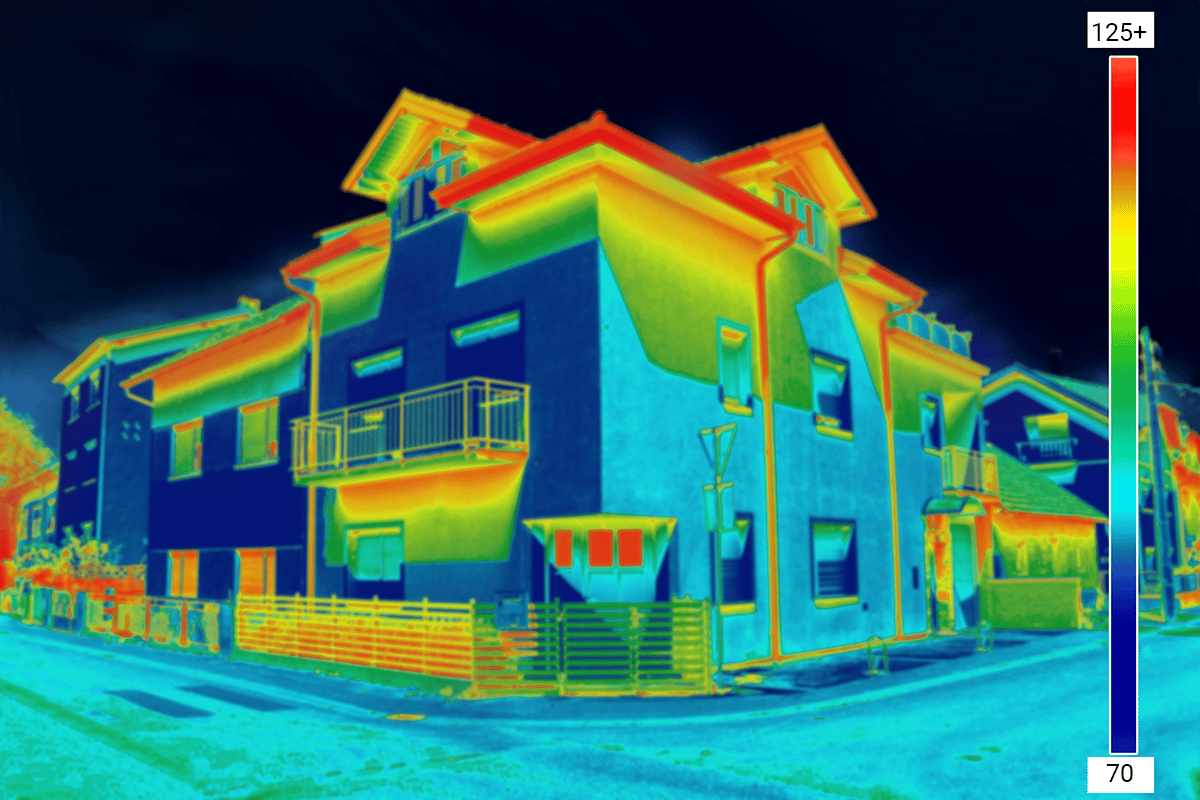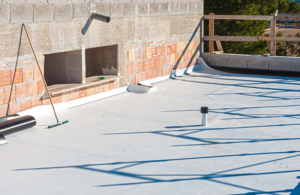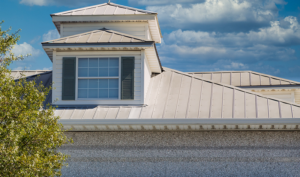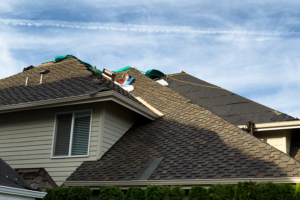The intense heat and direct solar radiation of summer are hard on your roof. Not only are shingles of all types stressed by high temperatures and ultraviolet radiation, so too are the plastic and composite elements such as vents, risers, sealants, gutters, and caulking. According to the US Dept of Energy, the surface of a conventional residential roof can reach 150° F. Consider what happens to your roof at these temperatures during the heat of the summer.
Extreme Roof Temperature In Summer Heat
The temperature rise from the summer heat and direct sunlight on your roof can cause materials to degrade. Increased temperature by as little as 20° F can double the rate of chemical reactions, cause loss of volatile constituents in shingles, and alter plastics and sealants. Temperature changes, either gradual or sudden (rain shower on a hot day), cause stresses due to uneven thermal expansion. Ultra Violet light can break many chemical bonds, especially in organic (carbon-based) materials like plastics, wood, and asphalt, and is often followed by oxidation. When atmospheric gases dissolve in water, acids are formed and can promote corrosive chemical reactions. Other pollutants and algae (cyanobacteria, molds, and other fungi) can stain roofing materials and lead to more heat absorption. Moss roots underneath shingles, both loosening and introducing moisture and salt deposits near the coast, can significantly damage metal fasteners and other components. All these processes increase with heat and can result in cracked and curled shingles. Curling shingles are likely to break off during summer storms, and the loss of surface granules on deteriorated shingles can lead to leaks and water damage inside the home.
Asphalt Shingles
Asphalt is a critical component in asphalt shingles and is easily oxidized in sunlight. As a result of oxidation, asphalt becomes more rigid and more brittle. Roofing granules are added to the surface to absorb the UV and slow down the shingle interior’s oxidation. Processes that erode the surface’s granules of asphalt roofs rapidly reduce your shingle’s lifespan and why roofing materials are generally less durable in hotter climates. Temperature changes loosen fasteners because of expansion and contraction and can damage shingles. If leaks develop during hot, dry periods because of shrinkage and cracking, you may not know you have developed a leak. When it’s not raining, cracked shingles are as good as any roof. So it’s best to have your roof professionally inspected, especially if it’s an older roof. Other roofing materials like ceramic tile are incredibly stable and not damaged by moderate changes in temperature. Also, metal roofs are resistant to temperature stress and generally last longer but are more expensive to install.
Plastics
Plastic parts like vents and risers, are likely to react with oxygen and/or water vapor, becoming brittle over time. Exposure to UV sunlight also causes surface erosion. An inspector will look for chalking on plastic parts, especially on older homes. Current roofing materials are UV resistant, and a certified roofing contractor will be sure to recommend these higher quality materials, which come with a manufacturer’s warranty. Skylights should also be examined, along with the areas of the roof surrounding them. A roofing expert will particularly check the condition of the seal around the window and for leaks in the window itself, as well as the flashing or metal strips found in the chimney, satellite dishes, and vents. All these deteriorate over time.
Ventilation
Inadequate ventilation in the attic traps heat, accelerates weathering and reduces the anticipated life of asphalt shingles. Roof venting is not just for heat dissipation. It can also help prevent moisture build-up, which is essential for many types of roofing. Excessive water vapor and condensation lead to swelling and rotting of wood, loosening fasteners like roofing nails, and causes faster corrosion of metal. Wood shake, tile, and metal roofs often integrate underside ventilation. Roof and ridge vents effectively reduce trapped heat in places where there is a lot of moisture and heat in the summer and cold in the winter. Active temperature-controlled venting can make a huge difference in moving heat out of the attic space and preventing moisture intrusion while not losing dry warmth from sunny winter days. Besides proper venting, consider your insulation and energy star rated windows for more energy savings and a cooler roof. Ask Blue Nail about active temperature-controlled attic venting for substantial energy savings and moisture control.
Visually Inspect Your Roof
On a walk around, inspect the condition of your roof, looking for loose shingles or tiles and accumulations of leaves and other debris. Pay close attention to the roof areas where debris may have become lodged over the winter months, like the shingle valleys.
On the roof, look for shingle-damage, such as missing, bent, or cracked shingles, which will become worse in the hot summer sun. Inspect the metal strips (flashing) around the areas of the chimney, vents, satellite dishes, skylights, or any other roof element, and for signs of water staining that may indicate a leak.
Gutters often accumulate debris. Inspect and clean as needed the whole gutter system, replace missing fasteners and look for rot at the attachment points; don’t forget your downspouts!
While you can take several steps to prepare your roof for the upcoming summer months, especially on an older home, it is often prudent to get a professional roof inspection by a roofing expert in your area.
RESOURCES
Blue Nail Roofing has a Master Elite contractor status awarded by the largest roofing manufacturer in North America, GAF. Only 2% of contractors in the US meet the rigorous standards to achieve this status, which means you can rest assured you are making the right choice when selecting the professionals at Blue Nail to execute your home and business roofing repairs. Call us, chat us or fill out our form here today to schedule a professional evaluation!
Copyright © 2020 Blue Nail Enterprises. All rights reserved. | Privacy Policy
Let Us Nail Your Project!







